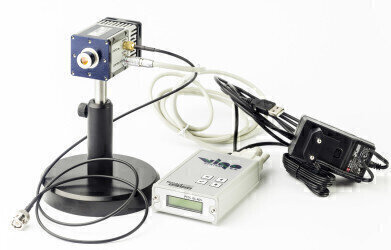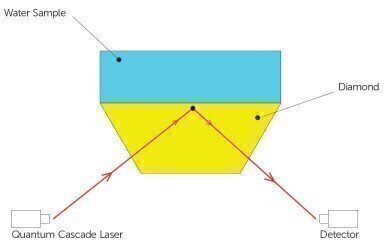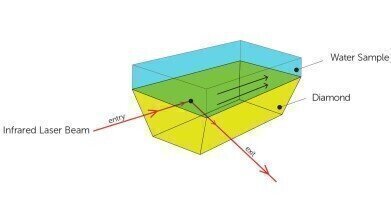Water/Wastewater
New deadly-bacteria detector to prevent water companies from closure
Jun 13 2018
A European research team is developing a photonic-ultrasound-based detector that will save water companies from closure in the wake of tough new drinking-water regulations, soon to be implemented by the WHO, providing the quickest ever safety diagnosis for deadly bacteria.
New high standards being set out for achieving safe drinking-water, where zero traces of bacteria should be present in a sample of just 100 ml, state future operators should adopt vigilant and proactive monitoring of drinking-water to assure microbiological safety at all times.
Despite high compliance monitoring from water companies across Europe, deadly disease outbreaks are a common occurrence, according to the 2017 World Health Organisation (WHO) report.
Monitoring three of the most deadly bacteria - E Coli, Salmonella and Pseudomonas Aeruginosa – in drinking water can take 3 days, with results usually delivered after an exposure has occurred. Since the concentration of contaminants can be very low, this deadly trio are often hard to detect. The current process involves water samples being taken and sent to a remote laboratory, and with bacteria traces often so small, a period of 24 hours is needed to allow the pathogens to cultivate.
However, a Photonics PPP Horizon 2020-funded water-safety project ‘WaterSpy’ has come up with a solution: a portable laser-based, water quality analyser employed at critical points on a water distribution network that provides a reading in a matter of hours rather than days. With its prototype ready, the WaterSpy team will take their device to be tested in two sites in Genova: the Prato Water Treatment Plant, and the entry point of the Genova water distribution network.
“Most water companies,” Alessandro Giusti, (PhD) manager within the coordinating organisation explains, “will struggle to meet these new strict laws if they simply carry on as they are right now. Current technologies for bacterial diagnosis are very slow and some of the faster ones are still not precise enough. So, new technologies, such as WaterSpy are needed.” Using the latest photonics technology, the device - a novel laser configuration combined with new photodetectors and ultrasound particle manipulation- is suitable for inline, field measurements. “Although the water that comes out of your tap is safe before it gets to you, water utilities, public authorities and regulators rely heavily on frequent sampling and laboratory analysis. This is both time-consuming and expensive. WaterSpy intends to speed this up, make huge savings and provide real-time critical data.”
“The speed of our device is unprecedented: a full sample analysis will take up to 6 hours to complete so comparing this to the 2-3 days it takes with existing methods, we expect results 12 times faster than the current standard. WaterSpy is relatively cheap and will adhere to incoming regulatory requirements in terms of specificity and sensitivity levels. ”
It works by first gathering the small traces bacteria, and then detecting them with a laser. “Unfortunately”, Giusti said, “water itself is a very strong absorber of infrared light and special techniques have to be applied.”
In the same way that sand resonates in gathered patterns on top of a ceramic tile when a sound wave is applied, ultrasound is used to congregate the bacteria in the water sample in order to enhance the detection and sensitivity.The WaterSpy device then detects the bacteria by exploiting a measurement technique called Attenuated Total Reflection (ATR), enabling a sample to be examined directly in the liquid state.Beams of infrared light are sent into a diamond over which the water flows. The IR light then reflects off the internal surface in contact with the water sample, before being collected by a detector as it exits the crystal.
Coordinated by CyRIC, Cyprus Research and Innovation Center Ltd the WATERSPY consortium secured a grant of €3, 049, 206.74 from the European Commission under the H2020 funding program. Waterspy is comprised of 9 partners with participants from 7 different European countries: (Italy) Consiglio Nazionale Delle Ricerche; IREN SPA; (Switzerland) Alpes Lasers SA; (Greece) National Technical University of Athens; A.U.G Signals Hellas Technology Developments and Applications; (Austria) Technische Universitaet Wien; (Poland) Vigo Systems SA; (Germany) Friedrich-Alexander-Universitaet Erlangen Nuernberg;
Digital Edition
IET 34.2 March 2024
April 2024
Gas Detection - Biogas batch fermentation system for laboratory use with automatic gas analysis in real time Water/Wastewater - Upcycling sensors for sustainable nature management - Prist...
View all digital editions
Events
Apr 22 2024 Hannover, Germany
Apr 22 2024 Marrakech, Morroco
Apr 23 2024 Kuala Lumpur, Malaysia
Apr 23 2024 Kintex, South Korea
Apr 23 2024 Edmonton, AB, Canada



-Ultrasound-on-(bottom)---showing-congregation-technique.jpg)


















